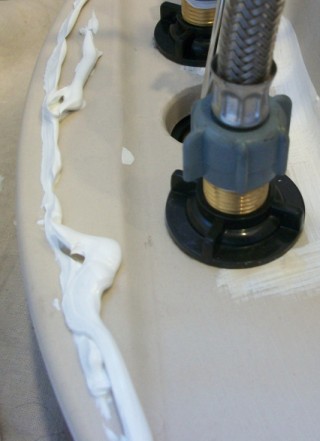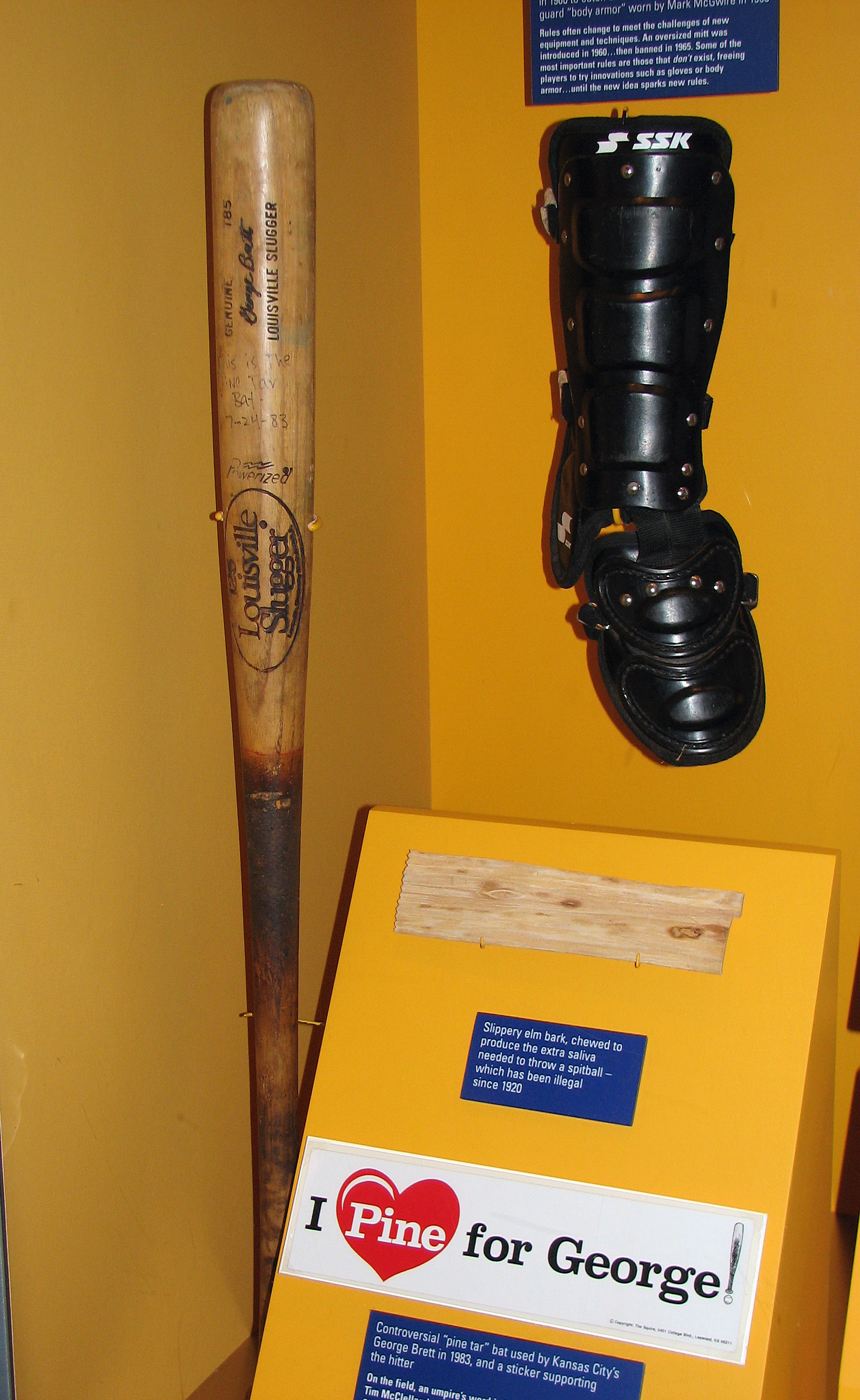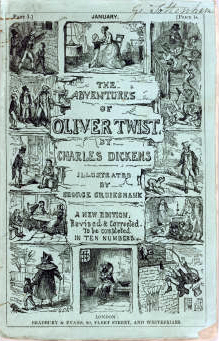|
Oakum
Oakum is a preparation of tarred fibre used to seal gaps. Its main traditional applications were in shipbuilding, for caulking or packing the joints of timbers in wooden vessels and the deck planking of iron and steel ships; in plumbing, for sealing joints in cast iron pipe; and in log cabins for chinking. In ship caulking, it was forced into the seams using a hammer and a caulking iron, then sealed into place with hot pitch. It is also referenced frequently as a medical supply for medieval surgeons, often used along with bandages for sealing wounds. History The word oakum derives from Middle English ', from Old English ', from ' ( separative and perfective prefix) + ' (akin to Old English ', 'comb')—literally 'off-combings'. Oakum was at one time recycled from old tarry ropes and cordage, which were painstakingly unravelled and reduced to fibre, termed "picking". The task of picking and preparation was a common occupation in prisons and workhouses, where the young or th ... [...More Info...] [...Related Items...] OR: [Wikipedia] [Google] [Baidu] |
Workhouse
In Britain, a workhouse () was an institution where those unable to support themselves financially were offered accommodation and employment. (In Scotland, they were usually known as poorhouses.) The earliest known use of the term ''workhouse'' is from 1631, in an account by the mayor of Abingdon reporting that "we have erected wthn our borough a workhouse to set poorer people to work". The origins of the workhouse can be traced to the Statute of Cambridge 1388, which attempted to address the labour shortages following the Black Death in England by restricting the movement of labourers, and ultimately led to the state becoming responsible for the support of the poor. However, mass unemployment following the end of the Napoleonic Wars in 1815, the introduction of new technology to replace agricultural workers in particular, and a series of bad harvests, meant that by the early 1830s the established system of poor relief was proving to be unsustainable. The New Poor Law of 18 ... [...More Info...] [...Related Items...] OR: [Wikipedia] [Google] [Baidu] |
Coldbath Fields Prison
Coldbath Fields Prison, also formerly known as the Middlesex House of Correction and Clerkenwell Gaol and informally known as the Steel, was a prison in the Mount Pleasant area of Clerkenwell, London. Founded in the reign of James I (1603–1625) it was completely rebuilt in 1794 and extended in 1850. It housed prisoners on short sentences of up to two years. Blocks emerged to segregate felons, misdemeanants and vagrants. History Coldbath Fields Prison (also known as the Middlesex House of Correction) was originally a prison run by local magistrates and where most prisoners served short sentences. Coldbath Fields also served as a debtor's prison. It took its name from Cold Bath Spring, a medicinal spring discovered in 1697. The prison housed men, women and children until 1850, when the women and children moved to Tothill Fields Bridewell in Victoria (Westminster) leaving only male offenders over the age of 17. Despite its aspirations to be more humanitarian (its redesign was by J ... [...More Info...] [...Related Items...] OR: [Wikipedia] [Google] [Baidu] |
Caulking
Caulk or, less frequently, caulking is a material used to seal joints or seams against leakage in various structures and piping. The oldest form of caulk consisted of fibrous materials driven into the wedge-shaped seams between boards on wooden boats or ships. Cast iron sewerage pipe were formerly caulked in a similar way. Riveted seams in ships and boilers were formerly sealed by hammering the metal. Modern caulking compounds are flexible sealing compounds used to close up gaps in buildings and other structures against water, air, dust, insects, or as a component in firestopping. In the tunnelling industry, caulking is the sealing of joints in segmental precast concrete tunnels, commonly by using concrete. Historical uses Wooden shipbuilding Traditional caulking (also spelled calking) on wooden vessels uses fibers of cotton and oakum (hemp) soaked in pine tar. These fibers are driven into the wedge-shaped seam between planks, with a caulking mallet and a broad chisel-l ... [...More Info...] [...Related Items...] OR: [Wikipedia] [Google] [Baidu] |
The Ballad Of Reading Gaol
''The Ballad of Reading Gaol'' is a poem by Oscar Wilde, written in exile in Berneval-le-Grand, after his release from Reading Gaol () on 19 May 1897. Wilde had been incarcerated in Reading after being convicted of gross indecency with other men in 1895 and sentenced to two years' hard labour in prison. During his imprisonment, on Tuesday, 7 July 1896, a hanging took place. Charles Thomas Wooldridge had been a trooper in the Royal Horse Guards. He was convicted of cutting the throat of his wife, Laura Ellen,GRO Register of Deaths: JUN qtr 1896 Wooldridge, Laura Ellen aged 23 Windsor 2c 241 earlier that year at Clewer, near Windsor. He was aged 30 when executed.GRO Register of Deaths: SEP qtr 1896 Wooldridge, Charles Thomas aged 30 Reading 2c 210 Wilde wrote the poem in mid-1897 while staying with Robert Ross in Berneval-le-Grand. The poem narrates the execution of Wooldridge; it moves from an objective story-telling to symbolic identification with the prisoners as a whole. N ... [...More Info...] [...Related Items...] OR: [Wikipedia] [Google] [Baidu] |
Oscar Wilde
Oscar Fingal O'Flahertie Wills Wilde (16 October 185430 November 1900) was an Irish poet and playwright. After writing in different forms throughout the 1880s, he became one of the most popular playwrights in London in the early 1890s. He is best remembered for his epigrams and plays, his novel '' The Picture of Dorian Gray'', and the circumstances of his criminal conviction for gross indecency for consensual homosexual acts in "one of the first celebrity trials", imprisonment, and early death from meningitis at age 46. Wilde's parents were Anglo-Irish intellectuals in Dublin. A young Wilde learned to speak fluent French and German. At university, Wilde read Greats; he demonstrated himself to be an exceptional classicist, first at Trinity College Dublin, then at Oxford. He became associated with the emerging philosophy of aestheticism, led by two of his tutors, Walter Pater and John Ruskin. After university, Wilde moved to London into fashionable cultural and social circ ... [...More Info...] [...Related Items...] OR: [Wikipedia] [Google] [Baidu] |
Cast Iron Pipe
Cast iron pipe is pipe made predominantly from gray cast iron. It was historically used as a pressure pipe for transmission of water, gas and sewage, and as a water drainage pipe during the 17th, 18th, 19th and 20th centuries. Cast iron pipe was frequently used uncoated, although later coatings and linings reduced corrosion and improved hydraulics. In cast iron pipe, the graphite forms flakes during the casting process, when examined under a microscope. Cast iron pipe was superseded by ductile iron pipe, which is a direct development, with most existing manufacturing plants transitioning to the new material during the 1970s and 1980s. Ductile iron pipe is different than cast iron, because the introduction of magnesium during the casting process causes the graphite to form spheres (graphite nodules) rather than flakes. While this allows the material to remain castable, the end product is much tougher than cast iron, and allows elastic behavior at lower stress levels. Littl ... [...More Info...] [...Related Items...] OR: [Wikipedia] [Google] [Baidu] |
Pine Tar
Pine tar is a form of wood tar produced by the high temperature carbonization of pine wood in anoxic conditions (dry distillation or destructive distillation). The wood is rapidly decomposed by applying heat and pressure in a closed container; the primary resulting products are charcoal and pine tar. Pine tar consists primarily of aromatic hydrocarbons, tar acids, and tar bases. Components of tar vary according to the pyrolytic process (e.g. method, duration, temperature) and origin of the wood (e.g. age of pine trees, type of soil, and moisture conditions during tree growth). The choice of wood, design of kiln, burning, and collection of the tar can vary. Only pine stumps and roots are used in the traditional production of pine tar. Pine tar has a long history as a wood preservative, as a wood sealant for maritime use, in roofing construction and maintenance, in soaps, and in the treatment of carbuncles and skin diseases, such as psoriasis, eczema, and rosacea. It is us ... [...More Info...] [...Related Items...] OR: [Wikipedia] [Google] [Baidu] |
Oliver Twist
''Oliver Twist; or, The Parish Boy's Progress'', Charles Dickens's second novel, was published as a serial from 1837 to 1839, and as a three-volume book in 1838. Born in a workhouse, the orphan Oliver Twist is bound into apprenticeship with an undertaker. After escaping, Oliver travels to London, where he meets the " Artful Dodger", a member of a gang of juvenile pickpockets led by the elderly criminal Fagin. ''Oliver Twist'' unromantically portrays the sordid lives of criminals, and exposes the cruel treatment of the many orphans in London in the mid-19th century. The alternative title, ''The Parish Boy's Progress'', alludes to Bunyan's '' The Pilgrim's Progress'', as well as the 18th-century caricature series by painter William Hogarth, '' A Rake's Progress'' and '' A Harlot's Progress''. In an early example of the social novel, Dickens satirises child labour, domestic violence, the recruitment of children as criminals, and the presence of street children. The novel ma ... [...More Info...] [...Related Items...] OR: [Wikipedia] [Google] [Baidu] |
Hemp
Hemp, or industrial hemp, is a botanical class of '' Cannabis sativa'' cultivars grown specifically for industrial or medicinal use. It can be used to make a wide range of products. Along with bamboo, hemp is among the fastest growing plants on Earth. It was also one of the first plants to be spun into usable fiber 50,000 years ago. It can be refined into a variety of commercial items, including paper, rope, textiles, clothing, biodegradable plastics, paint, insulation, biofuel, food, and animal feed. Although chemotype I cannabis and hemp (types II, III, IV, V) are both ''Cannabis sativa'' and contain the psychoactive component tetrahydrocannabinol (THC), they represent distinct cultivar groups, typically with unique phytochemical compositions and uses. Hemp typically has lower concentrations of total THC and may have higher concentrations of cannabidiol (CBD), which potentially mitigates the psychoactive effects of THC. The legality of hemp varies widely among coun ... [...More Info...] [...Related Items...] OR: [Wikipedia] [Google] [Baidu] |
Benito Cereno
''Benito Cereno'' is a novella by Herman Melville, a fictionalized account about the revolt on a Spanish slave ship captained by Don Benito Cereno, first published in three installments in '' Putnam's Monthly'' in 1855. The tale, slightly revised, was included in his short story collection ''The Piazza Tales'' that appeared in May 1856. According to scholar Merton M. Sealts Jr., the story is "an oblique comment on those prevailing attitudes toward blacks and slavery in the United States that would ultimately precipitate civil war between North and South". The famous question of what had cast such a shadow upon Cereno was used by American author Ralph Ellison as an epigraph to his 1952 novel ''Invisible Man'', excluding Cereno's answer, "The negro." Over time, Melville's story has been "increasingly recognized as among his greatest achievements". In 1799 off the coast of Chile, captain Amasa Delano of the American sealer and merchant ship ''Bachelor's Delight'' visits the ''San ... [...More Info...] [...Related Items...] OR: [Wikipedia] [Google] [Baidu] |
Tothill Fields Bridewell
Tothill Fields Bridewell (also known as Tothill Fields Prison and Westminster Bridewell) was a prison located in the Westminster area of central London between 1618 and 1884. It was named "Bridewell" after the Bridewell Palace, which during the 16th century had become one of the City of London's most important prisons. Tothill Fields later became the Westminster House of Correction. History Like its City counterpart, the Westminster Bridewell was intended as a "house of correction" for the compulsory employment of able-bodied but indolent paupers. Built in 1618, it was enlarged in 1655, and during the reign of Queen Anne, its regime was extended to cover the incarceration of criminals. In 1834 the original Bridewell was replaced by a larger prison, on a different site, in area, south of Victoria Street and close to Vauxhall Bridge Road. The new prison, designed by Robert Abraham and costing £186,000, was circular in plan (following Jeremy Bentham's "panopticon"), so that war ... [...More Info...] [...Related Items...] OR: [Wikipedia] [Google] [Baidu] |




.djvu/page1-1200px-The_Ballad_of_Reading_Gaol_(1904).djvu.jpg)




